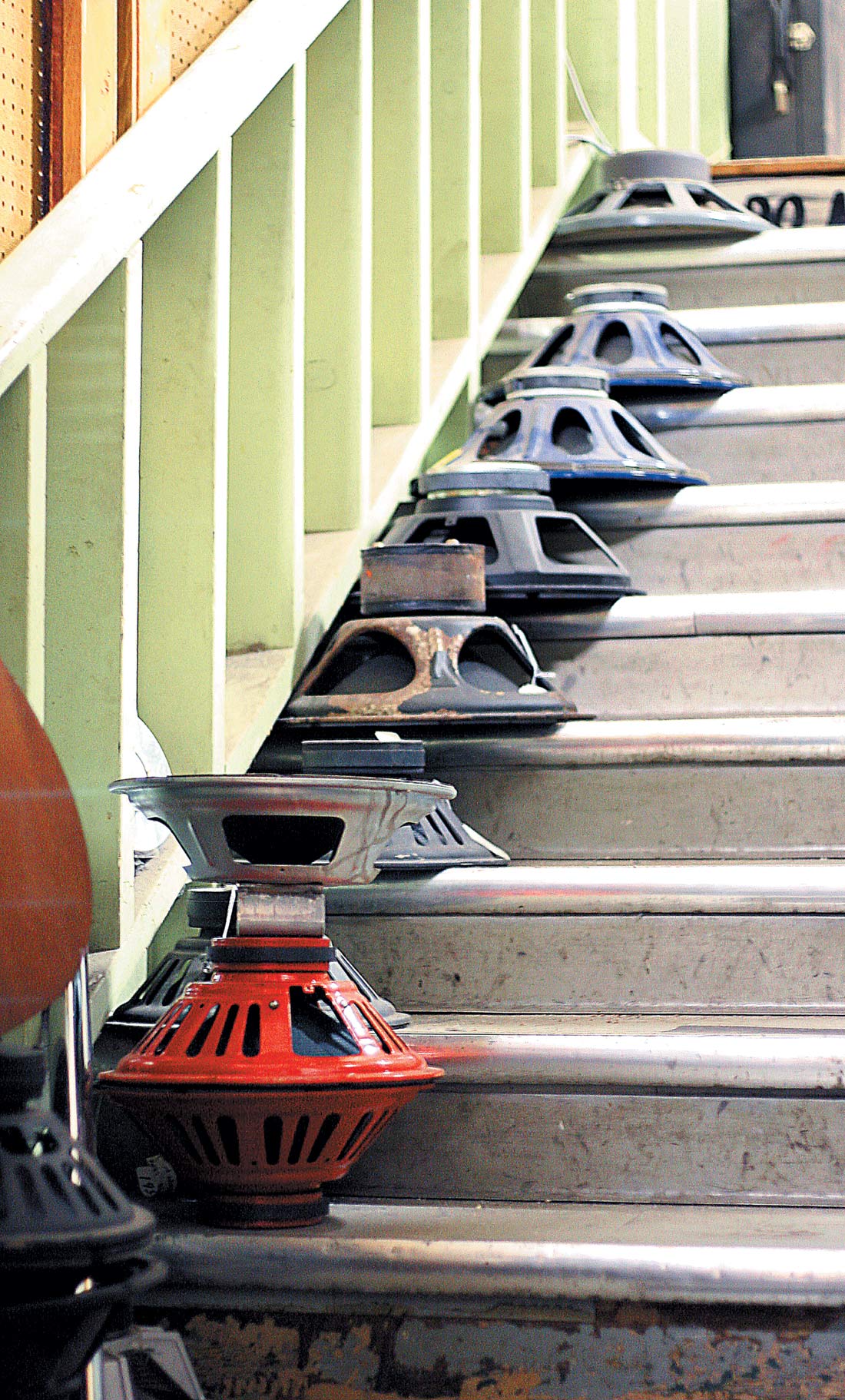SE Electronics is a China-based company started by conductor/composer Siwei Zou. Rather than manufacturing low-cost mics for other brands or assembling products made in other Chinese factories, SE Electronics focuses on developing products from their own designs using raw stock-all in house. Indeed, their webpage shows a CNC machine shop and test facilities that seem large enough to provide every man, woman, and child with a condenser mic.
The H1 is SE Electronics' only handheld offering, targeting both live and studio vocal applications. The stock's
paint job has a rubbery finish to it, to help the mic stay put, even through the utmost of stage antics. The windscreen is made of five layers of metal mesh and contains no foam. Removing the windscreen exposes a handsome capsule, borrowed and re-voiced from SE's SE2A microphone. Otherwise, there are no pad or filter switches that can be inadvertently flipped on-stage. It streets for $249.
At MIT's radio station, WMBR, we air live, fully-amplified performances from a small room-a tough situation for a vocal mic surrounded by loud instruments and subject to handling and mic-stand noise. Before looking at the H1's specs, and before putting the H1 through a microphone shootout, we put it in service as a vocal mic for these live in-studios. Immediately, the mic's two best features were apparent: low noise-floor and good rejection. The H1 did a remarkably good job of picking up only the vocals while playing deaf to a room full of amps and drums.
With a sensitivity spec of 2 mV/Pa, its output is less than almost every mic we see at WMBR, including dynamic mics such as the SM58. Our Mackie Onyx 2480's preamp gain was usually up near its 60 dB limit. Nonetheless, the mic still sounded remarkably silent due to its lower-than-average noise floor (and to the Onyx preamps as well). This, along with a higher-than-average maximum SPL of 145 dB, means a large dynamic range-better than many of its competitors in the handheld condenser field. Plus, most condensers (large-diaphragms in particular) are too sensitive to use easily in our setup, which relies heavily on close mic'ing to isolate sources, and a nice-sounding condenser with an output in the ballpark of our usual stash of dynamic mics is useful for live recording.
While the H1 exhibits many characteristics more dynamic-like than condenser-like, it does offer a better low-end response and superior clarity over the typical dynamic. Noticeably though, we didn't hear the presence peak in the highs that one hears in other vocal mics (both condensers and dynamics). This may be to your advantage, depending on the talent.
When compared to SE's Z3300A large-diaphragm condenser, you could hear little difference, other than noting the Z3300A's presence peak. When sized up against the SM58, the H1 sounded smoother and could register the throat/chest bass of male vocals, while doing a better job of rejecting the unwanted sounds of the room. Compared to its closest peer, the Shure SM85 vocal condenser, the H1 emphasized the low end more, and again, did a better job of rejecting the adjacent guitar amps.
If we have a gripe with SE Electronics, it would be a lack of documentation. The H1 page in particular shows no frequency or polar plots, nor a datasheet/manual. A one-sheet provided by the US distributor showed a frequency response lacking in the detail seen in other SE microphone plots. Perhaps mic comparison should be a matter of the ear and the heart, but some engineers love their datasheets. Aside from that, the H1, possessing the best features of both dynamic and condenser mics, has become a favorite at WMBR. Since receiving it some months ago, we've used it for most of our in-studio sessions. ($399 MSRP; www.seelectronics.com)
Tape Op is a bi-monthly magazine devoted to the art of record making.




_disp_horizontal_bw.jpg)